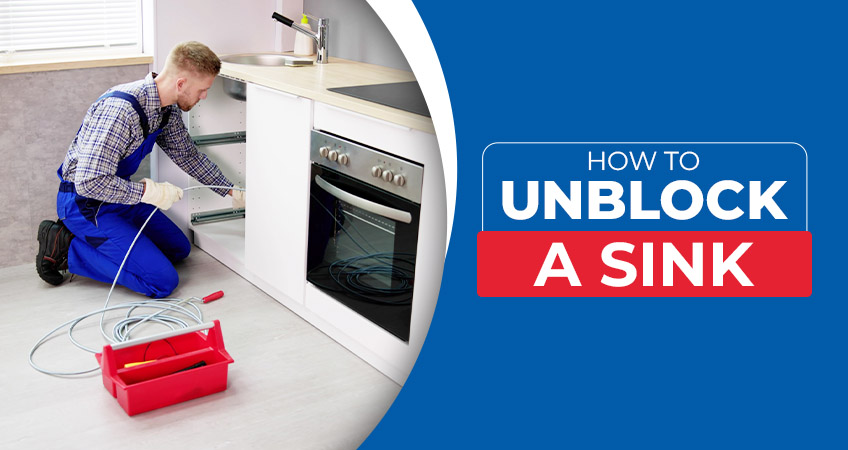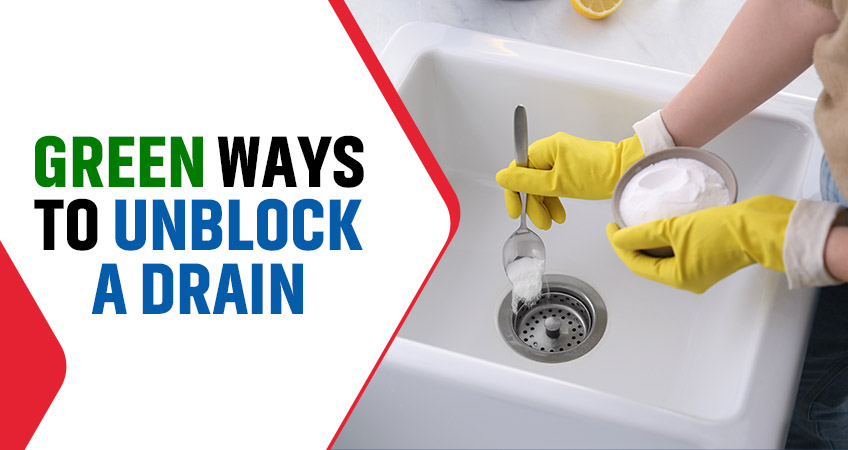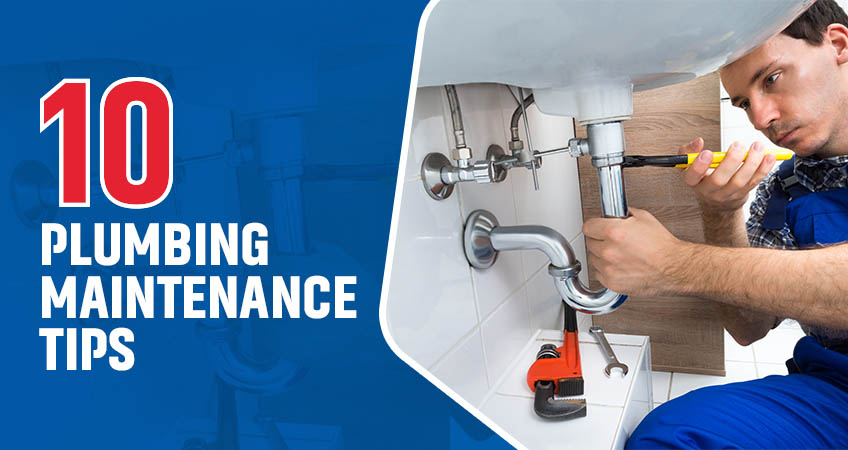There’s nothing quite as frustrating as a sink that won’t drain. Whether it’s in the middle of washing up after dinner or brushing your teeth at the end of the day, a blocked sink full of standing water can put a dampener on your plans. The good news? Most sink blockages can be tackled with a little know-how and elbow grease, saving you the hassle and cost of calling a plumber.
This article will guide you through everything you need to know about unblocking a sink, from identifying the cause to trying out DIY methods. And if all else fails, we’ll explain when it’s time to call in the professionals.
Understanding the causes of a blocked sink

Before you grab a plunger or start pouring random chemicals down your plug hole, it’s essential to understand what’s causing the blockage. Sinks can get clogged for a variety of reasons, and identifying the culprit will make it easier to tackle the issue effectively.
Common causes include:
- Grease and food residues in kitchen sinks, where fatty substances build up over time.
- Soap scum and hair in bathroom sinks, which often form stubborn tangles.
- Foreign objects like jewellery, bottle caps, or toys that accidentally fall into the drain.
- Mineral build-up in areas with hard water, which can gradually reduce water flow.
Understanding what might be causing your blockage is the first step in resolving the problem quickly and efficiently.
Safety first: preparing to unblock
Before you jump in, it’s important to take a few precautions to ensure the job is safe and mess-free:
- Protect your hands: Wear rubber gloves to guard against bacteria and chemicals.
- Clear the sink area: Remove dishes, debris or any items around the sink’s drain area.
- Have tools ready: Gather common items like a plunger, a kettle, baking soda, vinegar, and a wire hanger (we’ll go into these methods shortly).
- Lay towels down: This is essential if the sink’s blockage might cause water overflow. Better safe than sorry!
Now that you’re prepared, it’s time to try some DIY methods.
Effective methods to unblock a sink
1. The boiling water/hot water trick

Sometimes, the simplest solution is also the most effective. Blockages caused by grease or soap scum can often be loosened with boiling water. It’s essential to use boiling water as just warm water is simply not hot enough to break down scum and residue.
Steps to follow:
- Boil a full kettle of water.
- Carefully pour the boiling water directly into the drain in small quantities.
- Wait a few minutes and see if the excess water begins to drain freely.
- Repeat the process, if necessary.
Top tip: This method works best for minor clogs and is a great first step before trying anything more heavy-duty.
2. Plunging like a pro
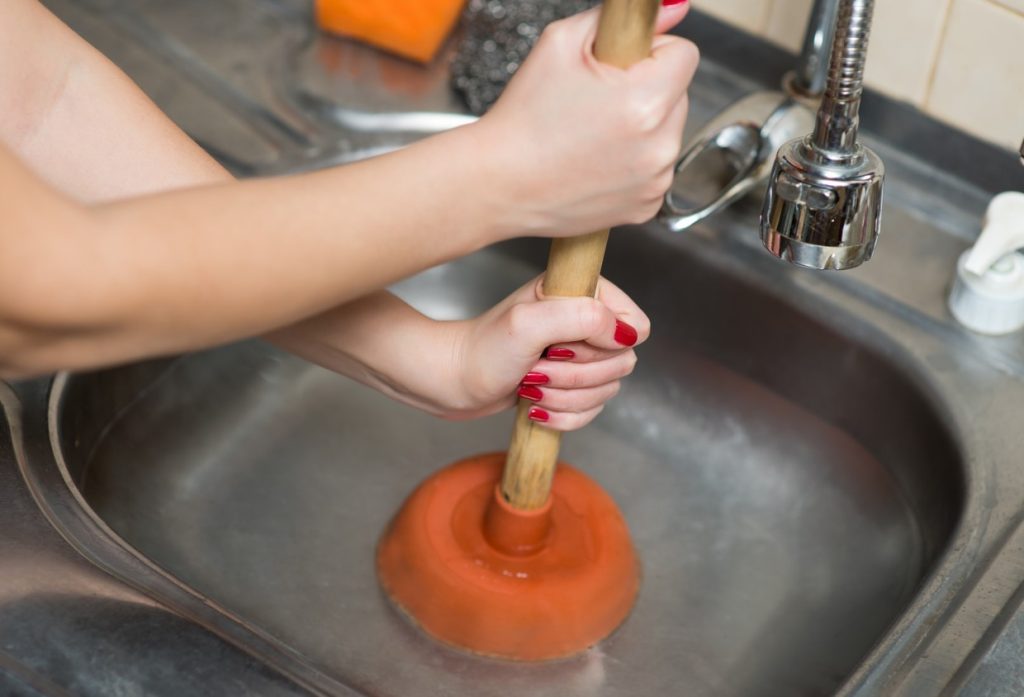
The trusty plunger is a classic sink-unblocking tool for a reason. It’s effective, straightforward, and doesn’t involve any harsh chemicals.
Steps to follow:
- Fill the sink with just enough water to cover the plunger’s rubber cup.
- Place the plunger over the drain, creating an airtight seal.
- Push the plunger up and down rhythmically to create suction.
- After a few firm pumps, remove the plunger to check if the blockage has cleared.
If the water starts to drain, success! If not, you might need to combine it with another method.
3. Baking soda and vinegar power
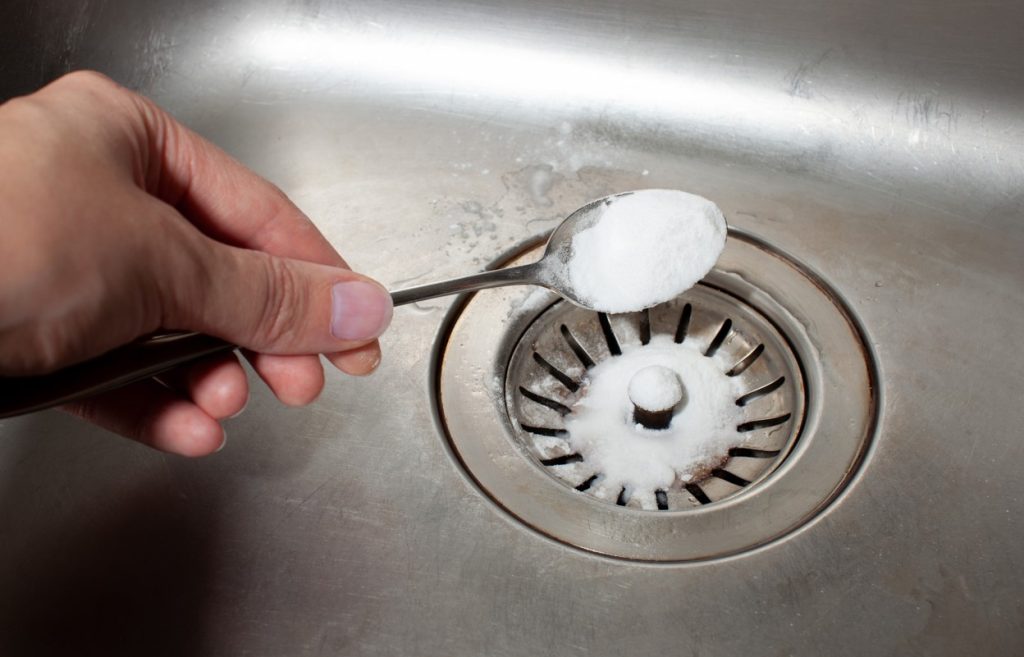
This natural, eco-friendly method is perfect for breaking down stubborn build-ups like grease and grime.
Steps to follow:
- Pour one cup of baking soda or soda crystals directly into the drain.
- Follow it up with one cup of white vinegar.
- Cover the drain with a stopper or a cloth to contain the fizzing reaction. Wait for 10-15 minutes.
- Finally, flush the drain with boiling water to clear away the loosened debris.
Pro tip: Not only is this method effective, but it’s also an excellent odour remover for smelly drains. If you don’t have baking soda and vinegar to hand, washing powder can be just as effective and it smells even better!
4. The wire hanger hack
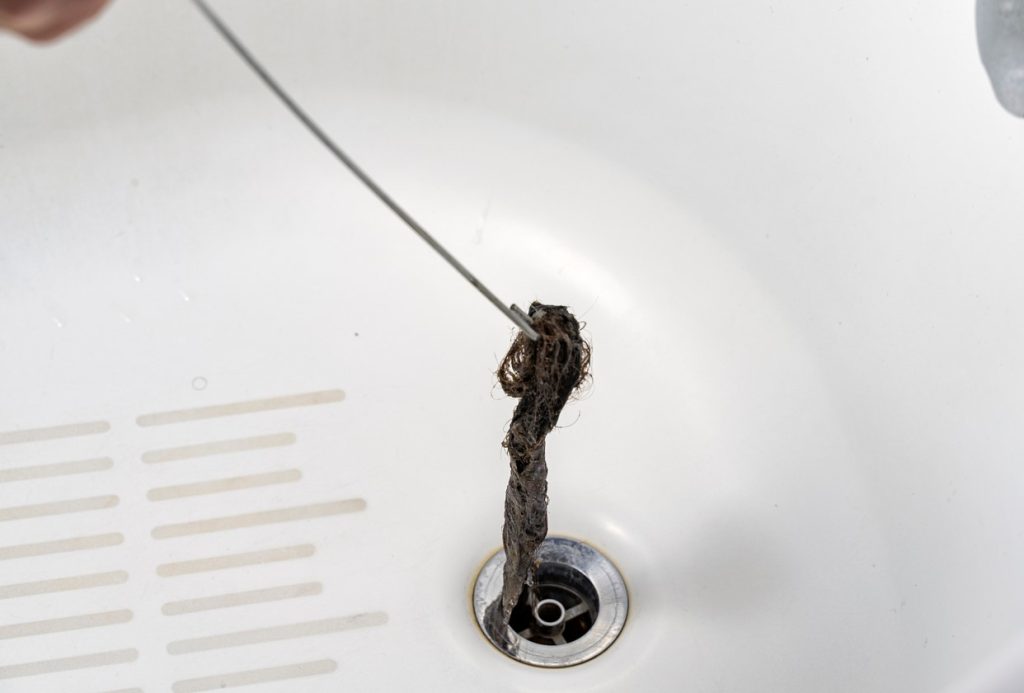
For tougher clogs involving hair or solid debris, a trusty wire coat hanger can work wonders.
Steps to follow:
- Untwist a standard wire hanger and straighten it out, leaving a small hook at one end.
- Insert the hook into the drain and carefully fish around to catch debris.
- Pull the hanger up periodically to remove trapped gunk.
- Repeat until the blockage is cleared.
Be sure to dispose of any retrieved mess hygienically and rinse the sink thoroughly.
When to call a professional plumber

Despite your best DIY efforts, some blockages are simply too stubborn or complex to handle on your own. If you’ve tried all the above methods without success, or if you notice these red flags, it’s time to call in a professional plumber:
- Persistent water that won’t drain, even after multiple attempts.
- Gurgling noises from the pipes, indicating a deeper blockage.
- Foul odours that won’t disappear, signalling possible drain damage.
- Water backing up in other fixtures (e.g., water bubbling up in the sink when you flush the toilet).
A professional plumber, like the ones here at Plumbernow, has the tools and expertise needed to tackle complex clogs and ensure your drains are in top shape.
Preventative measures: keeping your sink clear
Prevention is always better (and cheaper) than cure.
Here are some easy tips to keep your sink drains clear and avoid future blockages:
- Don’t pour grease or oil down the kitchen sink. Collect it in a container and dispose of it in the bin instead.
- Use drain covers to catch hair, food particles, and small objects before they slip into the drain.
- Pour boiling water once a week to keep grease and soap scum from building up.
- Avoid chemical drain cleaners, which can be harsh on your pipes and the environment.
By practising these simple habits, you can avoid the frustration of blocked sinks in the future.
FAQ
Can I use the same methods for a kitchen sink?
Yes, these unblocking tricks can be used for either a kitchen or bathroom sink. However, keep in mind that the boiling water method may not be as effective if there is solid food debris present in the u bend. In this case, it’s best to start with a plunger or baking soda and vinegar combination.
How often should I clean my sink drains?
It’s recommended to clean your sink drains at least once a week to prevent build-up and potential blockages. This can be easily done by flushing hot water down the drain or using baking soda and vinegar regularly.
Why is my bathroom sink blocked all the time?
Bathroom sinks are more prone to blockages due to the accumulation of hair, soap scum, and toothpaste residue. It’s important to regularly clean your bathroom sink drains using preventative measures, such as using drain covers and flushing with hot water.
Can I use a chemical drain unblocker as a last resort?
We advise against using chemical drain cleaners as they can be harsh on your pipes and the environment. It’s best to call a professional plumber for stubborn blockages rather than risking damage to your plumbing system.
Sink blockages sorted!
Blocked sinks and clogged drains might be frustrating, but they don’t have to ruin your day. Armed with this guide, you can quickly identify the cause, try multiple DIY fixes, and take preventative steps to keep your drains running smoothly.
If all else fails, don’t worry—Plumbernow is here to help with professional drain unblocking services. Get in touch with our expert team today, and we’ll have your sink back to normal in no time.
Contact Plumbernow now for fast, reliable plumbing solutions.

